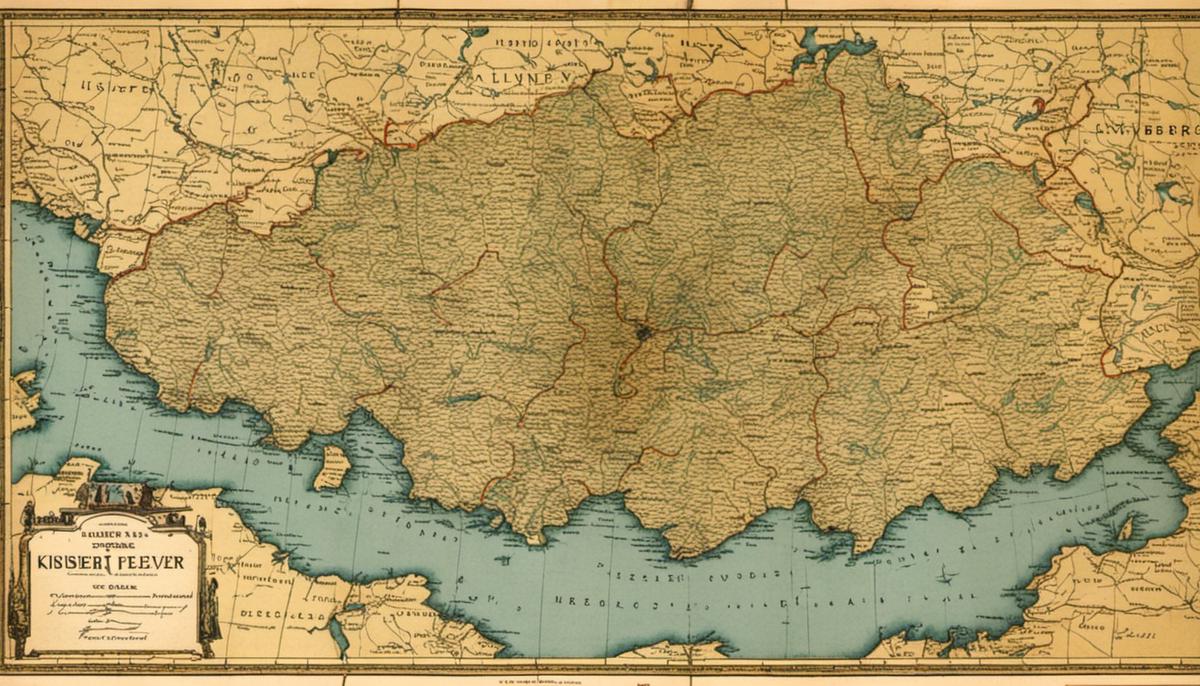With its origins tracing back to the 19th century, the Kisber Felver horse represents an interesting intersection of history, genetics, and equestrian athletics. Developed in Hungary, this breed is known for its unique blend of aesthetic appeal and versatile skills, resulting from the influence of thoroughbred stallions. The Kisber Felver’s rich history is intertwined with the course of geopolitical events that have shaped its distribution and current status. Today, this breed is notable for its range of physical characteristics and traits, demanding a specific regimen for care and maintenance. Its adaptability and skill set have made it a popular choice for various sporting events, even as efforts to conserve and preserve its lineage continue.
Table of Contents (Horspedia)
The History of the Kisber Felver
Origins and Early Development of Kisber Felver Breed
The Kisber Felver breed has its origins in Hungary and dates back to the 19th century. It was initially developed in Kisbér, a town in the northwest part of Hungary, which is where the breed gets its name from. The breed was primarily developed by the Austro-Hungarian Empire, which began to cross domestic Hungarian horses with imported English Thoroughbred stallions to create a high-performance equine breed that could serve the military goals of the Empire.
Role of Thoroughbred Stallions in Shaping Kisber Felver
The role of the imported English Thoroughbred stallions in shaping the Kisber Felver was critical and significant. The goal was to infuse the traits of speed, strength, and endurance from the English Thoroughbreds into the native Hungarian breeds. The resulting horses were known for their fine bone structure, muscular build, smart appearance, and excellent galloping abilities. Over time, other breeds such as the Arabian, Lipizzan, and Furioso-North Star were also included in the mix to improve the breed further.
Geopolitical Changes and Impact on Kisber Felver
The breed’s distribution and its current status have been largely influenced by various geopolitical events. The Kisber Felver breed, having been established as an excellent racing breed and carriage horse, had been sought after by various nations. However, during the World War II, these horses were used for warfare that resulted in a significant reduction in their population. A great number of these horses were moved to Germany and Austria for breeding and to rebuild the population.
After the war, the populations were largely distributed across Europe with significant populations in Germany, the Netherlands, and Austria. Meanwhile, in the 1970s, around 300 Kisber Felver horses were transported to North America, where a new strain of the breed began to develop. Presently, the breed is relatively unknown with only a small number of breeders in Europe and North America focused on preserving and promoting the breed. The Kisber Felver breeding stock today remains limited but is managed to preserve and promote its unique traits.
Understanding Kisber Felver Horses in the Modern Era
Today, Kisber Felver horses have earned a reputation based on their multi-purpose capabilities. They are frequently utilized in a myriad of equestrian activities, including dressage, show jumping, endurance riding, and driving. Notably, their speed, agility and remarkable stamina have put them at the forefront of competitive equestrian sports. Their even-tempered nature and resilience likewise make them an excellent choice for recreational activities. The breed, despite its limited numbers, sees continuous efforts aimed at its preservation and promotion, owing to its unique attributes and rich history.
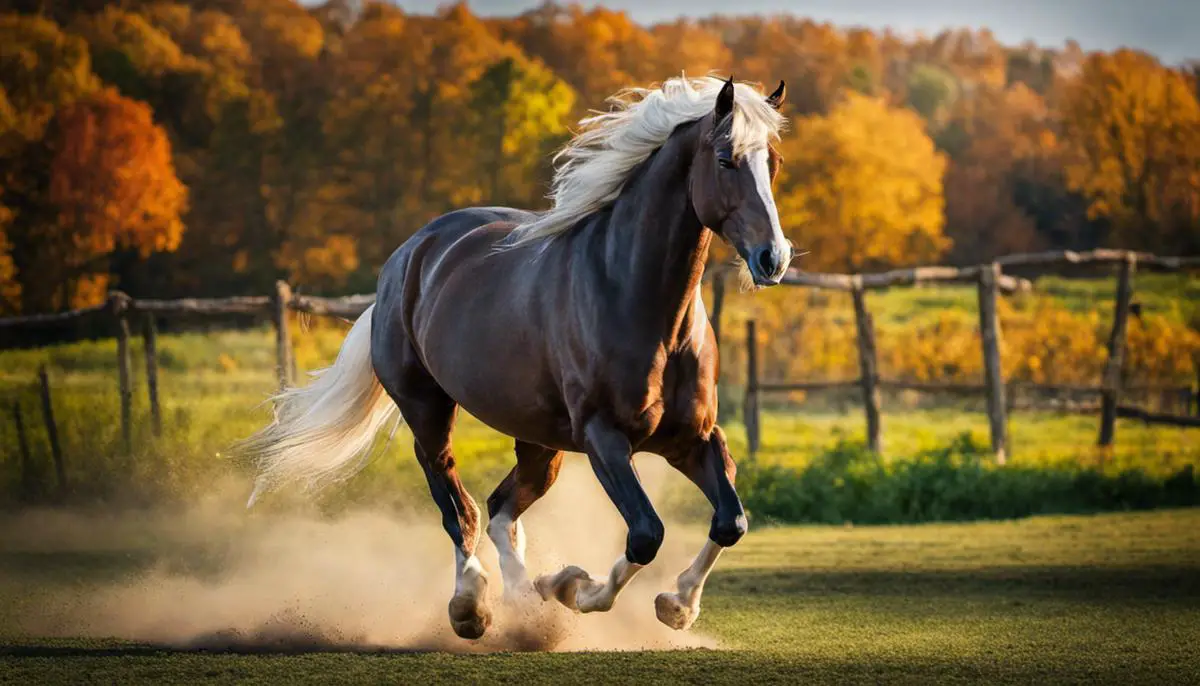
Characteristics and Traits of the Kisber Felver
Diving into the Physical Traits of Kisber Felver Horses
Respected as an adaptable warmblood breed, the Kisbér Felver hails from Hungary. Horses of this breed typically stand between 15.2 to 16.2 hands tall and are appropriately built for a wide range of tasks. Their marked muscular structure and harmonious proportions not only yield a striking appearance, but also furnish the physical strength needed for taxing equestrian events. The durability of the breed is further supported by their robust, straight legs and sturdy hooves, making them exceptionally fit for both dressage and show jumping.
Regarding their coats, the Kisbér Felver breed exhibits an array of colors. Bays, chestnuts, greys, and blacks are commonly seen. Additionally, unique color patterns such as roans and other markings, including stripes and stars, can be found, enhancing their visual appeal even more.
Kisber Felver’s Temperament and Skill Sets
Renowned for their calm and level-headed demeanor, a Kisbér Felver’s temperament is one of its noteworthy aspects. They are known to be compliant, intelligent, and willing, making them especially ideal for new learners or amateur riders. Their eagerness to cooperate and their capacity to comprehend rigorous training schedules contribute significantly towards their success in performance activities.
Interestingly, the Kisber Felver breed boasts a wide range of skill sets. These horses are adept at competition and show events, including dressage, show jumping, hunting, and even endurance races. Despite the rigorous training and discipline these events demand, the Kisber Felver handles these with grace, proving their exceptional adaptability and resilience.
The Kisber Felver’s Environmental Adaptability
Noted for their exceptional endurance and adaptability, Kisber Felver horses fit seamlessly into different environments. Originally bred for tasks such as carriage pulling and riding, they have innate stamina that lends well to endurance racing. Their agility and strength also make them suitable for a range of other equestrian pursuits, from farming to leisure riding and competitive activities.
Significantly, the Kisber Felver is well-equipped to navigate diverse climates. Originating in the harsh conditions of Hungary, these horses can handle both warm and cold temperatures. This attribute, paired with their resilience and versatility, places the Kisber Felver in high regard among horse enthusiasts.
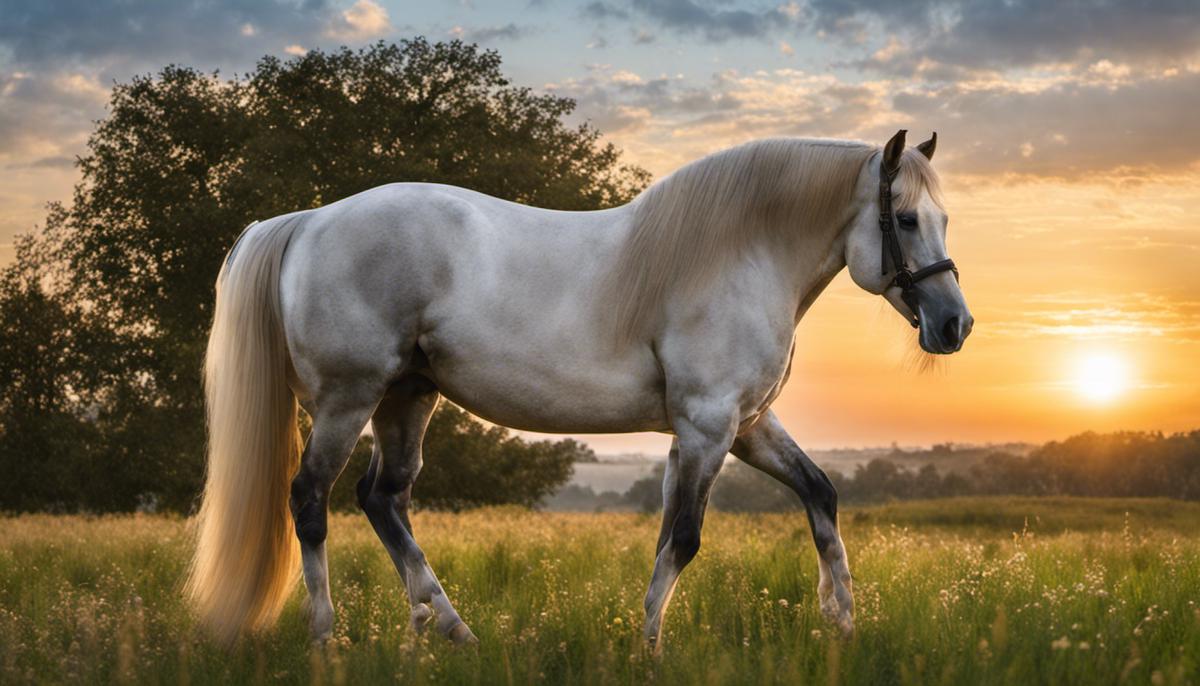
Care and Maintenance of Kisber Felver
Caring for a Kisber Felver Horse
The well-being of a Kisber Felver horse rests on a few key pillars. Foremost among them is the living environment. A clean, dry stall with regular maintenance to prevent infections is essential. Daily opportunities for outdoor exercise and grazing are also important for these horses.
Similar to other breeds, Kisber Felvers should be groomed regularly. This both helps to maintain coat and skin health and gives caregivers a chance to look for any injuries or early signs of diseases. Given their warm coat, extra care must be taken during summer to avoid overheating.
Lastly, hoof care should never be neglected, as issues here can rapidly escalate to serious health conditions. Regular appointments with a farrier every six to eight weeks, along with annual dental check-ups, should be a part of the Kisber Felver’s care routine.
Diet of a Kisber Felver Horse
The diet of a Kisber Felver horse should be balanced and nutritious. Given its tremendous athleticism, it requires high-quality food. The primary diet should be forage, including hay and grass. Concentrated foods like grains, oats, and corn can be provided but in moderation. Horses also need a constant supply of fresh, clean water.
Since Kisber Felver horses are prone to obesity, monitoring their body score constantly helps ensure a proper diet. Providing vitamins and mineral supplements is often required. Veterinarians should be consulted before altering the diet or starting a supplement program.
Exercise and Training for a Kisber Felver Horse
As a highly energetic breed, Kisber Felver horses need plenty of exercises regularly. Keeping them physically active helps maintain their health and wellbeing. Regular exercise can vary from everyday riding, engaging in sports, or free-ranging. These exercises also mentally stimulate them, avoiding potential behavioral problems.
Training should start from a young age, and it requires consistency and patience. This breed is known for its intelligence, versatility, and willingness to work. Training them for competitions or simply for pleasure riding can be an enjoyable process.
Common Health Issues in Kisber Felver Horses
Kisber Felver horses have a robust health profile. However, some health issues commonly affect them. They are prone to obesity and overfeeding, leading to laminitis—an inflammation within the hoof causing severe pain and lameness. Regular exercise and a balanced diet can help to prevent this from happening.
Like all breeds, episodes of colic—which is a severe gastrointestinal disturbance—can occur. Regular deworming, dental check-ups, and vaccinations should be included in their health care regimen. Musculoskeletal issues can also occur due to their active nature.
To detect issues early, regular veterinary check-ups are crucial for a healthy Kisber Felver horse. Always follow the advice of vet or equine nutritionist on diet, supplements, and preventative health care.
Looking After the Health of Kisber Felver Horses
The health of Kisber Felver horses can be maintained through several preventive measures including scheduled veterinary assessments, proper vaccination schedules, and parasite control initiatives. A regular regime of grooming can help prevent the onset of skin diseases and possible infections. Moreover, a well-balanced diet and regular feeding times are essential to keep obesity and related health complications at bay. Consistent exercise is also beneficial for their overall wellbeing, while hoof care can prevent issues related to lameness.
To summarize, the care for a Kisber Felver horse requires routine health inspections, monitoring of diet, ensuring adequate exercise, and training. Adhering to these measures enhance both the quality of life and performance of these remarkable horses.
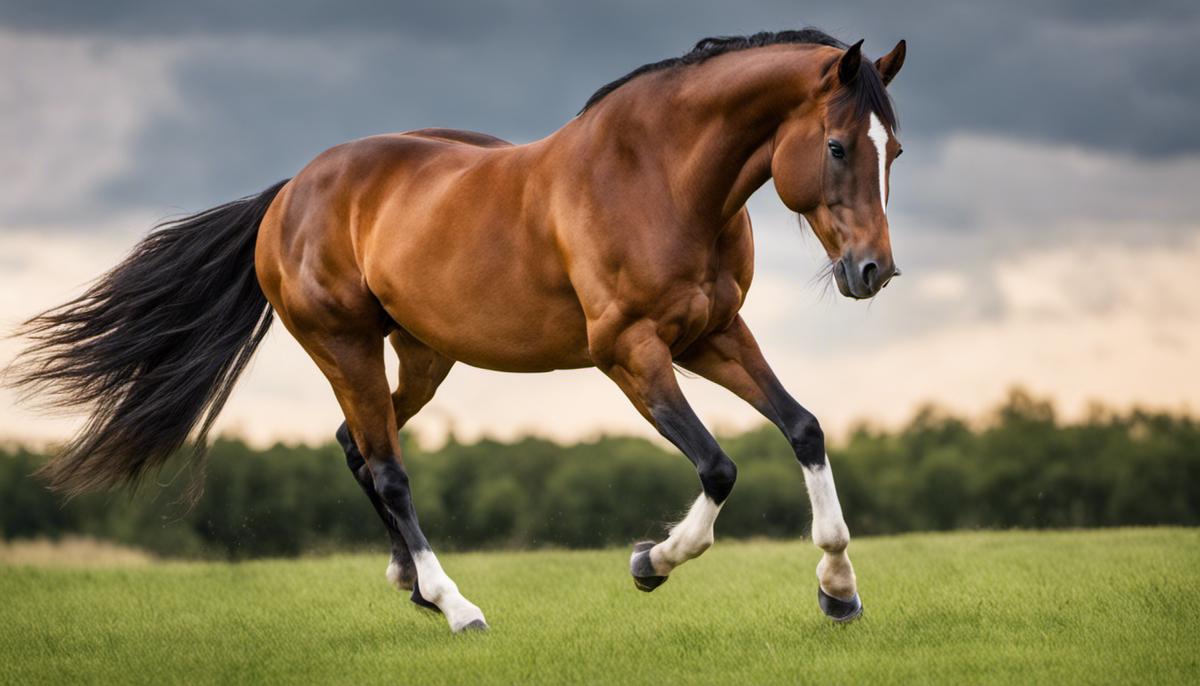
The Kisber Felver in Modern Times
The Noteworthy Status of Kisber Felver Breed
The Kisber Felver breed, renowned for their athleticism, elegance, and stamina, continue to display a marked influence in horse sports, mainly in eventing and show-jumping competitions. With roots tracing back to Hungary in the 19th century, these horses have made significant contributions to global competitions through the years. Their adaptability, toughness, and capacity to adjust to a variety of climates are highly cherished.
Arguably, their most noteworthy achievement is their consistent dominance in eventing. This is a three-phased sport that evaluates a horse’s prowess in dressage, cross-country, and show jumping. Given their outstanding agility, speed, and endurance, it’s no surprise why they are celebrated in this sport.
Efforts in Conservation
On a global scale, the Kisber Felver is not currently listed as an endangered breed. However, there have been conservation efforts, especially within Hungary, to preserve the unique genetic characteristics of these horses. Notably, the Kisber Felver Preservation Program, supported by both Hungarian and international breeders, is making strides in protecting and promoting the breed. This program revolves around selective breeding practices to retain the breed’s authentic characteristics.
Cultural Significance in Hungary
In Hungary, these horses hold significant cultural value. The Kisber Felver is a symbol of the country’s rich horse-riding tradition. The breed was established by the Austro-Hungarian Empire in the Kisbér region, and the country has continually taken pride in the breed’s international success.
The breed’s history is deeply entwined with the national heritage. It is a common sight during national holidays and traditional ceremonies, where these horses play a significant part. Also, they are often showcased as a proud segment of Hungary’s equestrian prowess during international events.
Despite the changing dynamics of horse breeding, the Kisber Felver continues to hold its ground, signifying Hungarian horse mastery. The government and local bodies have recognized the breed as a part of their cultural heritage, and their significance in the country’s history continues to be commemorated, contributing to the breed’s enduring popularity.
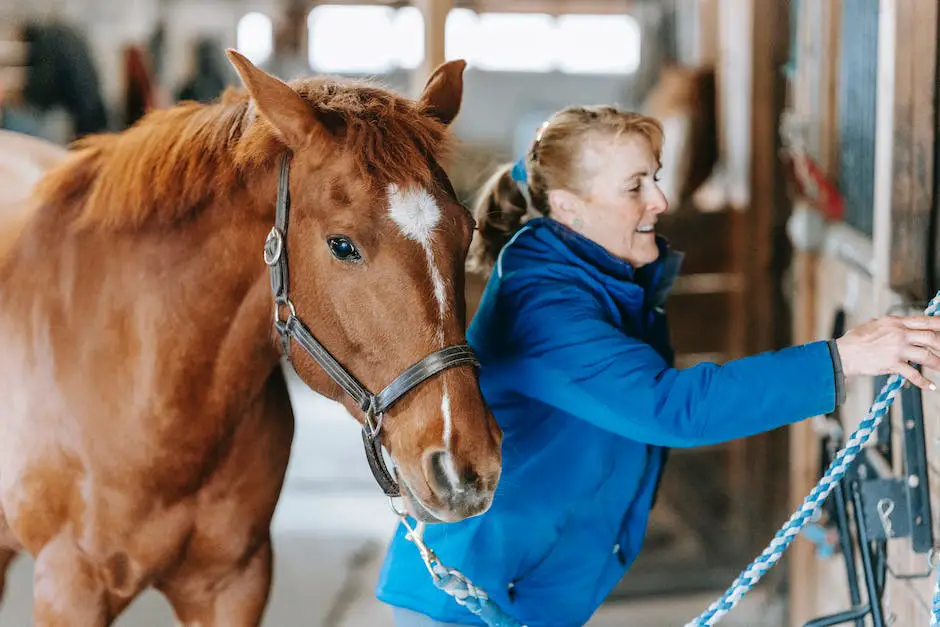
Kisber Felver’s relevance extends beyond its athletic prowess and striking looks; it holds cultural significance in Hungary, symbolizing the nation’s proud equestrian tradition. Whether showcased in highly competitive instances like show jumping and dressage, or performing resolutely in endurance racing, the breed’s imprint remains indelible. However, being well-informed about the Kisber Felver is not just about appreciating its past and present accomplishments, but crucially about understanding their care, health concerns, and the importance of continuing conservation efforts. As we continue to observe and appreciate the Kisber Felver, we participate in a broader narrative of equestrian history, animal genetics, and the complex relationship humans share with these magnificent creatures.
